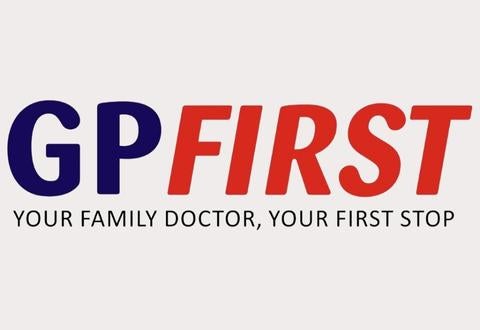Changi General Hospital will NEVER ask you to transfer money over a call. If in doubt, call the 24/7 ScamShield helpline at 1799, or visit the ScamShield website at www.scamshield.gov.sg.
A smart hospital for sustainable patient care
- Issue 1
- Time does not heal all wounds
- Healed in the nick of time
- Checking Your Body For Wounds
- Pressure Injury 101
- Easing the pressure
- Eating your way to better healing of wounds
- From pandemic to endemic
- Moved by movement
- Tackling the Perils of Performance
- Take on 2022 with resilience
- A smart hospital for sustainable patient care
- Bringing GPFirst — a CGH Initiative — to the Nation
- Ouch! Does my wound need stitches?
- Understanding Diabetes
A round-up of recent healthcare innovations by the CGH team.

Robots in our care team: CGH Chief Executive Officer Prof Ng Wai Hoe (centre) believes in developing robotics to take on time-consuming, routine tasks so that healthcare can become more humanised.
New waves of healthcare innovations around the world are being accelerated to meet evolving patient needs. Changi General Hospital (CGH) actively pursues a culture of research and innovation, forging strong partnerships with local and international partners to discover and co-create radical solutions across the entire continuum of care for our community. CGH’s areas of focus include medical technology, robotics, clinical research, population health, health services research and translational research. These in turn leverage areas of strength such as ageing, sports medicine, mental health and rehabilitative medicine.

The hospital is also embarking on non-traditional areas of research, as it takes over the care of the Changi Prison community this year, and partners East Coast GRC MP Jessica Tan to develop a dementia-friendly neighbourhood. CGH is not only big on robotics and automation but has also adopted digital technologies — from Artificial Intelligence (AI) to wearable medical devices and telemedicine — to enhance delivery of care and achieve sustainable healthcare. Its team of robots perform daily tasks such as cleaning and delivery of meals, medical specimens and case notes, and care for patients through robotic therapy, gait assessment, social stimulation and precision medicine.
Check out some of CGH’s research and innovations to care for patients from hospital to home:

Piecing memories together
Tangrams are not just a favourite with the young. CGH and the Singapore University of Technology & Design (SUTD) co-created Piece by Piece, a mobile game application to stimulate seniors with dementia and engage them meaningfully through reminiscence therapy and technology.
Tangrams with themes based on Singapore’s traditions and culture — such as old scenes of kampongs and Samsui women — are designed to evoke memories of Singapore in the old days.
Find the Piece by Piece app on the Play Store or App Store.

BWatch-ing over our patients
With the ability to differentiate between blood and other fluids, the Blood WArning Technology with Continuous Haemoglobin (BWATCH) device created by CGH and SUTD can continuously monitor any bleeding from wound sites after invasive medical procedures in real time, thus enhancing patient safety. This medical innovation has been validated in a published clinical trial, and patented in Singapore and the United States.

Predicting with AI
Using over 3,000 chest X-ray lung images and 200,000 data points to train and test an engine, the CGH care team developed an AI predictive tool to calculate almost instantaneously the risk of pneumonia patients requiring critical care.
The Community Acquired Pneumonia and COVID-19 Artificial Intelligence Predictive Engine (CAPE) is able to provide early warnings to doctors before the pneumonia patients are likely to become critically ill, so that they can prescribe the appropriate measures to improve patient outcomes.

Hanging out with the bot
The youngest dancer in the hospital is none other than our social robot Pepper. It plays a key role in conducting interactive group activities for senior patients at CGH, including those with dementia or delirium, enabling not just cognitive stimulation but also aiding in reducing functional decline.
Customised by the CGH care team to speak various languages, Pepper’s wide repertoire of stretching exercises, short dance routines, cognitive stimulation therapy and reminiscence therapy has been well-received by patients. With this good aide, nurses can focus on clinical tasks such as monitoring the participants’ physical conditions to provide enhanced patient care.

A ‘brake’ in medicine delivery
Who would have guessed that a tab could put a stop in medicine delivery for the safety of patients? A CGH pharmacist and an SUTD student devised an additional barrier for a syringe by affixing a series of labelled tabs to the syringe handle mount. Known as Syringe Brake, this low-cost flow restrictor device controls the amount of medicine delivered. The innovation was trialled by CGH and other hospitals, and brought to market. Today, it is used in the emergency departments of three hospitals.
Stay Healthy With
© 2025 SingHealth Group. All Rights Reserved.


















